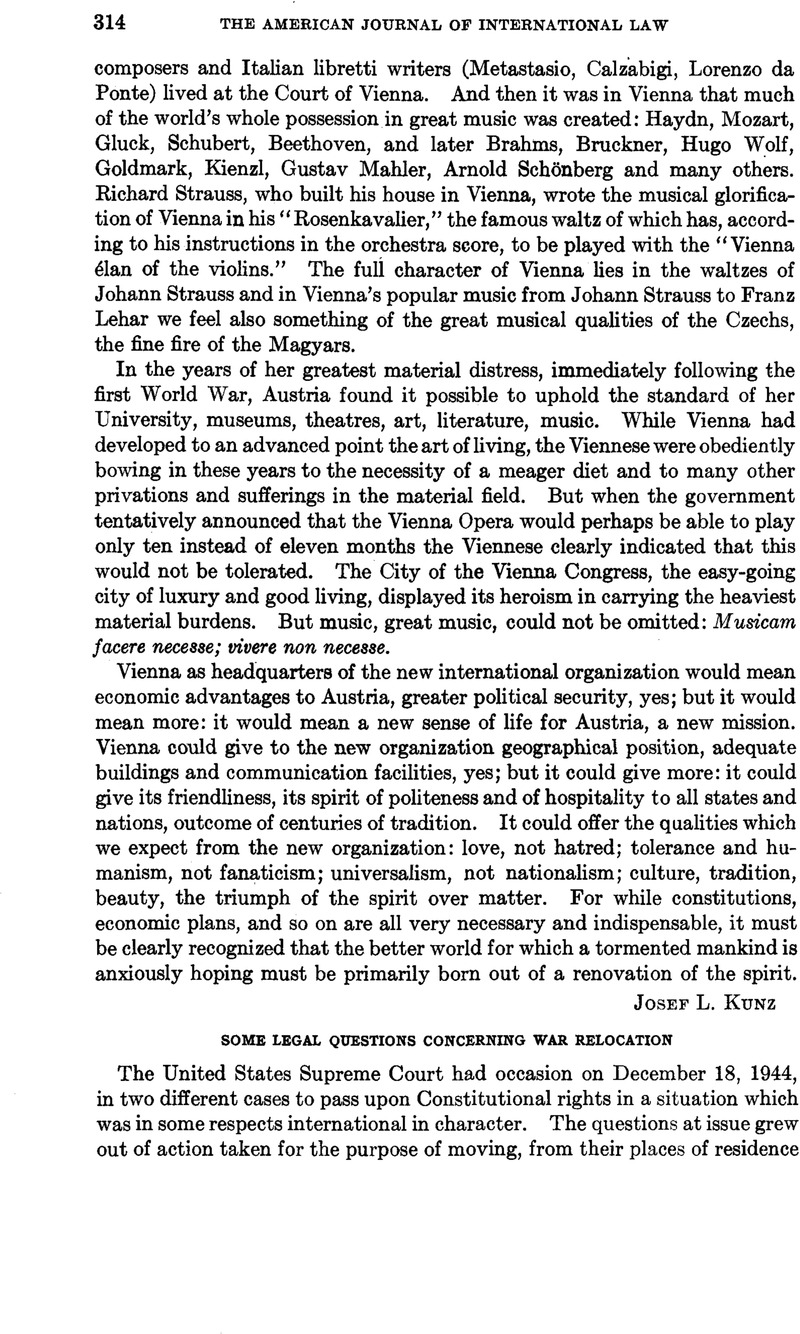No CrossRef data available.
Published online by Cambridge University Press: 25 April 2017

1 This Journal, Vol. 38 (1944), pp. 402-406.
2 65 Sup. Ct. Rep.193,
3 Civilian Exclusion Order No. 34 of the Commanding General of the Western Command, United States Army. 7 Fed. Beg.2367.
4 56 Stat.173.
5 320 U. S.81.
6 Cf.,on the point, the present writer's statement in this Journal, Vol. 38 (1944), pp. 402- 403.
7 Ex parte Mitsuye Endo,65 Sup. Ct. Rep.208.
8 58 Stat.677. Loss of citizenship may be accomplished by making in the United States “a formal written renunciation of nationality in such form as may be prescribed by, and before such officer as may be designated by, the Attorney General, whenever the United States shall be in a state of war and the Attorney General shall approve such renunciation as not contrary to the interests of national defense.” According to a recent statement approximately 6,000 of the 7,000 Japanese-Americans over 17 years old in the Tule Lake segregation center and 150 Japanese-Americans in other relocation camps or communities have asked for citizenship renunciation petitions: statement of Representative Engle of California, as reported in The New York Times,March 20, 1945, p. 20.
9 Restrictive action such as that which gave rise to these cases has been followed by steps looking to the termination of the relocation experiment. Early in March, 1945, there was an official statement that 28,541 persons who had formerly been in relocation centers had reported their resettlement, and that 60,397 remained in the centers. It was also announced that the relocation centers would be closed during the present year and that persons who were not permitted to resettle would probably be transferred to the segregation camp at Tule Lake, California: The New York Times,March 7, 1945, p. 9.